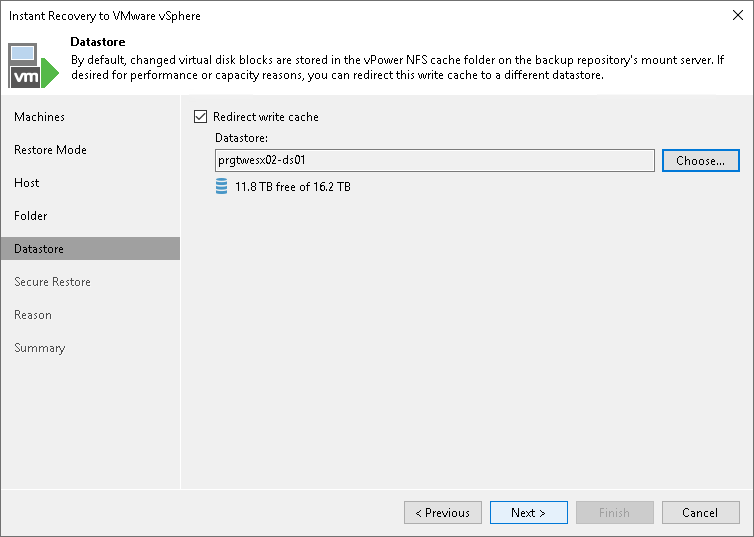 This is an archive version of the document. To get the most up-to-date information, see the current version.
This is an archive version of the document. To get the most up-to-date information, see the current version.Step 6. Select Destination for Virtual Disk Updates
This step is available if you restore workloads to a new location or with different settings.
At the Datastore step of the wizard, you can select where to store redo logs when a VM is running from a backup. Redo logs are auxiliary files used to keep changes that take place while the restored VM run.
By default, redo logs are stored on the vPower NFS server. You can store redo logs on any datastore in the virtual environment, if necessary. Redirecting redo logs improves recovery performance but makes Storage vMotion not possible for ESXi 5.5. As soon as a recovery verification job completes, Veeam Backup & Replication deletes redo logs.
To redirect redo logs:
- Select the Redirect write cache check box.
- Click Choose and select a datastore from the list.
|
Consider the following:
|
